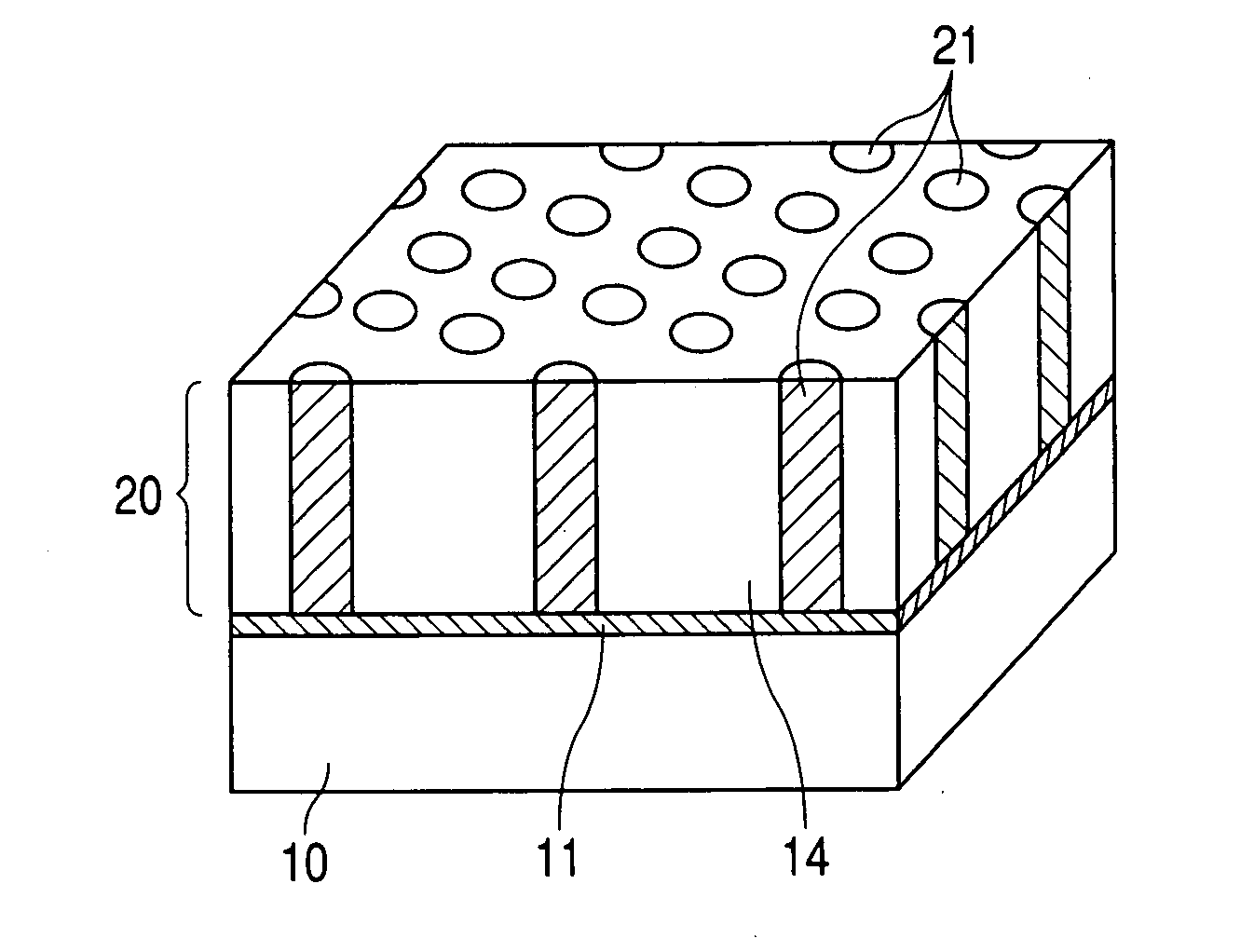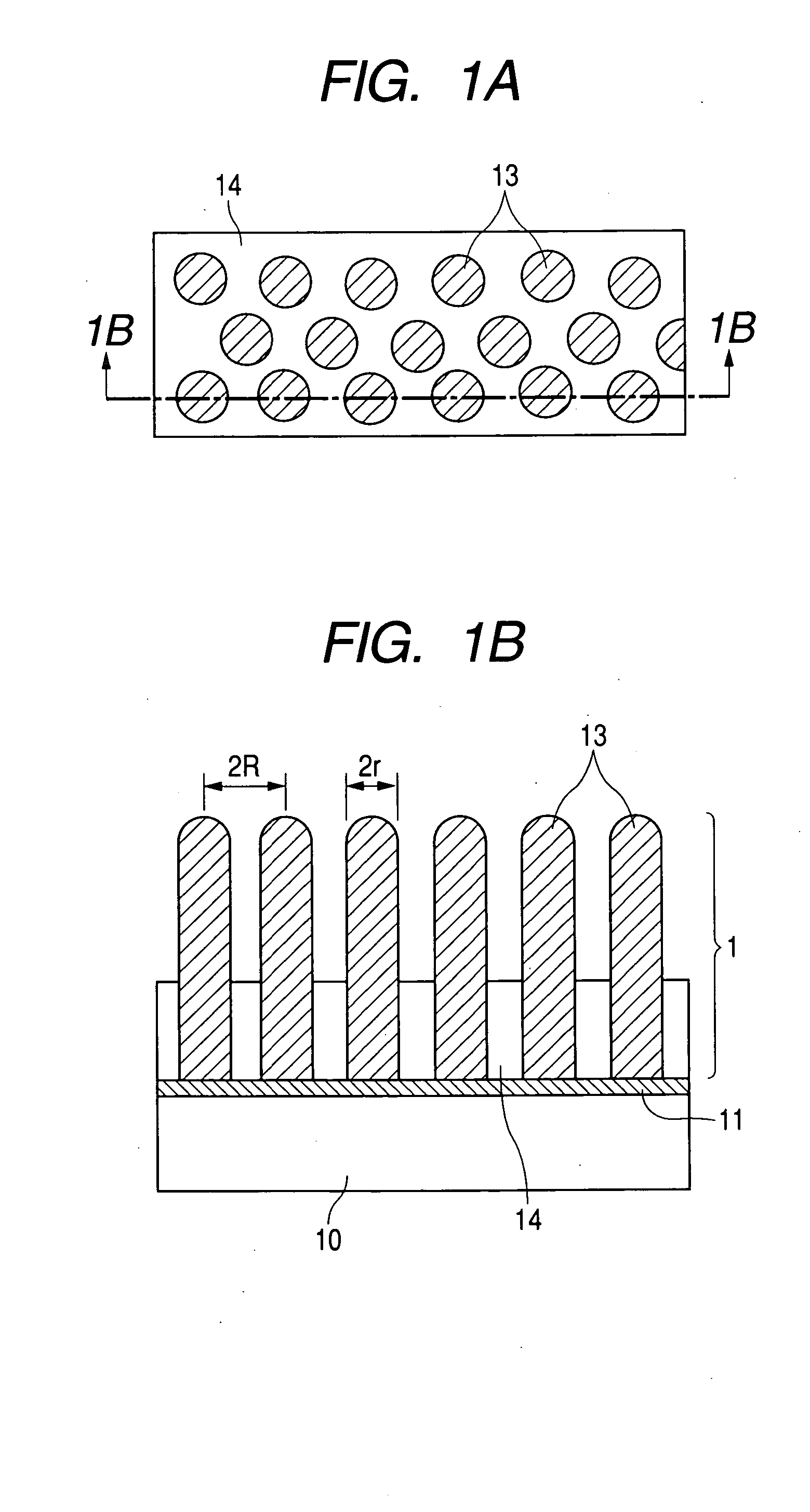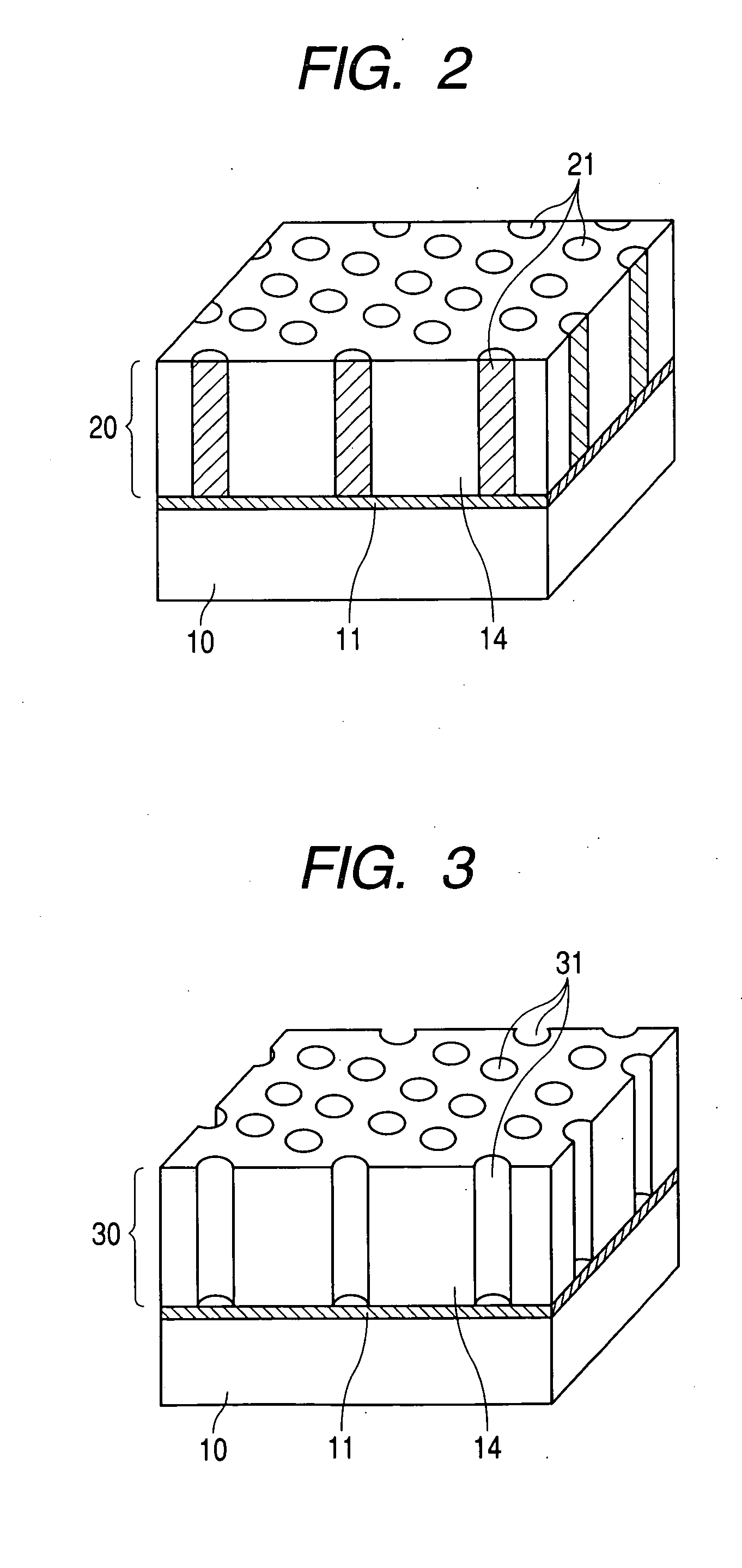Structure and method for production of the same
a technology of nanostructure and manufacturing method, applied in the field of nanostructure, can solve the problems of increasing equipment cost, difficult to produce nanowires with very small diameters and integrated at a high density, and poor yield of nanostructure fabrication by such semiconductor processing techniques
- Summary
- Abstract
- Description
- Claims
- Application Information
AI Technical Summary
Benefits of technology
Problems solved by technology
Method used
Image
Examples
example 1
[0133]FIGS. 5A, 5B, 5C, 5D, 5E and 5F are a flow chart showing one Example of a method for production of a nanostructure in the present invention as described previously. In this Example, one example of forming a nanostructure having Pt nanowires formed by the following steps (1) to (5) is shown.
[0134] (1) Deposition Step 1 (Deposition of Underlayer) (See FIG. 5A)
[0135] As shown in FIG. 5A, a Si substrate 51 was used as a substrate, a Pd thin film 52 with the thickness of 20 nm was formed on the Si substrate 51 by the magnetron sputtering method in this step. The Pd thin film 52 is a catalysts layer for the electroless plating step described below.
[0136] (2) Deposition Step 2 (Deposition of AlSi) (See FIG. 5B)
[0137] In this Example, an example of AlSi is shown, but the AlSi part may be replaced with AlGe or AlSiGe.
[0138] As shown in FIG. 5B, an AlSi structure thin film 53 with the thickness of 100 nm having AlSi as a main component was formed on the Pd thin film 52 with the thi...
example 2
[0152] This Example shows one example of forming a nanostructure having Pt nanowires formed by the following steps (1) to (5).
[0153] (1) Deposition Step 1 (Deposition of Underlayer), (2) Deposition Step 2 (Deposition of AlSi)
[0154] These steps are same as the steps in Example 1 described above.
[0155] (3) Porous Member Forming Step Used by Electroless Plating Solution, (4) Step of Continuous Electroless Plating Steps
[0156] The thin film fabricated in the steps (1) and (2) described above was immersed in a platinum electroless plating solution at 60° C. for 1 hour. The Pt electroless plating solution used here is a plating solution prepared by mixing together 1) 100 mL of Rectroless Pt 100 base solution, 2) 10 mL of 2.8% aqueous ammonia, 3) 2 mL of Rectroless Pt 100 reducing agent and 4) 88 mL of pure water, and the pH of the plating solution is 12.
[0157] This sample was observed by a FE-SEM and as a result, it was found that Pt with the diameter of 5 nm and the height of 100 nm ...
example 3
[0163] This Example shows one example of forming a nanostructure having Pt nanowires formed by the following steps (1) to (5). This Example shows an example in which Pd fine particles are used as a catalyst layer as a method different from the method in which “the Pd thin film fabricated by the magnetron sputtering method is used as a catalyst layer for electroless plating” described in the paragraph (1) Step of depositing Underlayer in Example 1.
[0164] (1) Formation of Pd Fine Particles
[0165] A Si substrate was used as a substrate. Pd fine particles were formed on the Si substrate using a sensitive-active method that is generally known. First, the Si substrate was immersed in a SnCl2 solution to adsorb Sn2+ ions on the surface of the substrate. Then, The Si substrate was immersed in a PdCl2 solution, whereby Pd2+ ions were reduced according to the following reaction to deposit active catalyst nuclei on the surface of the substrate.
Sn2++Pd2+→Sn4++Pd
[0166] The following steps, i....
PUM
 Login to View More
Login to View More Abstract
Description
Claims
Application Information
 Login to View More
Login to View More - R&D
- Intellectual Property
- Life Sciences
- Materials
- Tech Scout
- Unparalleled Data Quality
- Higher Quality Content
- 60% Fewer Hallucinations
Browse by: Latest US Patents, China's latest patents, Technical Efficacy Thesaurus, Application Domain, Technology Topic, Popular Technical Reports.
© 2025 PatSnap. All rights reserved.Legal|Privacy policy|Modern Slavery Act Transparency Statement|Sitemap|About US| Contact US: help@patsnap.com



